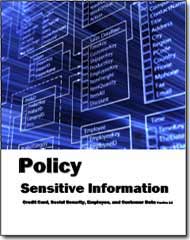Protect Against Identity Theft
Approximately 10 million Americans, or 3.8% of the total U.S. population, learned that they were victims of identity fraud.
The number of minor incidents of identity fraud has fallen with fewer victims, however, the frauds are now more difficult to detect and resolve, resulting in higher consumer costs and risks. Average (mean) consumer costs is now over $1,000. Consumer costs are any out-of-pocket expenses suffered by the fraud victim, including unreimbursed monetary losses, and lost wages as a result of time spent to resolve the fraud as well as any related legal costs and credit monitoring costs.
10 Steps to take to Prevent Identify Theft
- Secure your Social Security number (SSN). Don't carry your Social Security card in your wallet. Only give out your SSN when necessary.
- Don't share personal information (birth date, Social Security number, or bank account number) because someone asks for it.
- Collect mail every day. Place a hold on your mail when you are away from home for several days.
Pay attention to your billing cycles. If bills or financial statements are late, contact the sender.
Use the security features on your mobile phone. - Update sharing and firewall settings when you're on a public WiFi network. Use a virtual private network (VPN), if you use public WiFi.
- Review your credit card, bank account statements, and credit reports. Compare receipts with account statements. Watch for unauthorized transactions
- Shred receipts, credit offers, account statements, and expired credit cards. This can prevent “dumpster divers” from getting your personal information.
- Store personal information in a safe place.
- Install firewalls and virus-detection software on your home computer, tablet, and cell phone.
- Create complex passwords that identity thieves cannot guess. Change your passwords if a company that you do business with has a breach of its databases
- Lock your credit files with Equifax, Experian, Innovis, TransUnion, and the National Consumer Telecommunications and Utilities Exchange ( a free service). Credit locks (freezes) prevent someone from applying for and getting approval for a credit account or utility services in your name.
Because of the zero-liability fraud protection offered by the majority of banks and card issuers, most victims will have to pay out-of-pocket expenses only to cover their time in resolving fraud, not to reimburse fraudulent charges. The average time to resolve identity fraud in is now over 40 hours. Resolution times are now at their highest point since resolution times were first measured.
A major reason for the rise in consumer costs and resolution times is explained by the relative rise in new account fraud. New account fraud is now responsible for almost half of the total dollar amount lost to identity fraud (46%). New account fraud on average takes longer to detect and results in higher mean consumer costs than other types of fraud, such as existing account fraud and non-card fraud. This is partly because new account fraud typically requires a credit report or use of a credit monitoring service to detect; thus, stopping the fraud requires teamwork between consumers and businesses.
The longer identity fraud goes undetected, the more expensive and difficult to resolve it tends to be for the consumer. Therefore, it is vital for consumers to monitor their accounts frequently and to partner with their financial institutions to help prevent, detect and resolve fraud. About half of identity frauds are detected by consumers, and half are detected by third parties (45% vs. 55%). Banks, credit unions and credit card issuers detect more identity fraud but often need the cooperation of their customers to stop incidents quickly.
Order Sensitive Information Policy Download Selected Pages Version History
